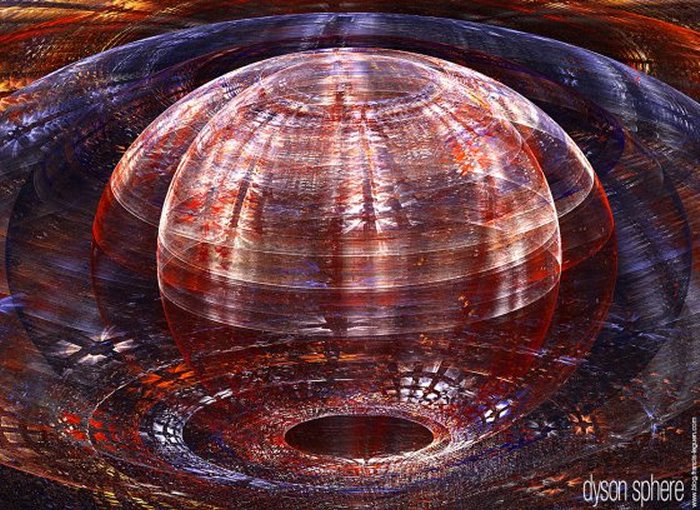Dyson Spheres And Powerful Alien Worlds – Let’s Make Science Fiction A Reality!
Cynthia McKanzie – MessageToEagle.com – Search of evidence for civilizations advanced enough to have built massive orbiting “solar” power stations continue.
Scientists make and will continuously make attempts to find signatures of cosmic-scale archaeological artifacts, like for examples, such as Dyson spheres or Kardashev civilizations.
The detection of intelligence elsewhere in the Universe with interstellar archaeology or SETI would have broad implications for science. Trying to make science fiction a reality, astronomer Geoff Marcy – will go through data from the Kepler space telescope to look for Dyson spheres.
In the meantime, Raphael Bousso will make attempts to probe multiverse theory and look for ways of detecting universes other than our own.
Marcy realized that the Kepler data might also reveal stars with orbiting power stations called Dyson Spheres: megastructures that orbit a star and capture a large proportion of its energy. They were proposed by physicist Freeman Dyson more than 50 years ago as a likely way for advanced civilizations to power their power-hungry societies.
“The Dyson sphere conjecture speculates that a planet could be purposely broken up to form a heat-absorbing shield around a star to provide more useful energy.
One fanciful model of a Dyson sphere would be a star enclosed in a shroud of solar-cell calculator chips. A recent whole sky search for Dyson spheres using the database from the IRAS satellite has shown that there are at most only a few lackluster candidates in a region containing a million suns,” according to Richard A. Carrigan, Jr., Fermi National Accelerator Laboratory, who is the author of the paper Starry Messages: Searching for Signatures of Interstellar Archaeology.
Geoff Marcy will look at 1,000 of Kepler’s extrasolar systems in search of solar arrays that pass in front of stars and make them wink on and off.
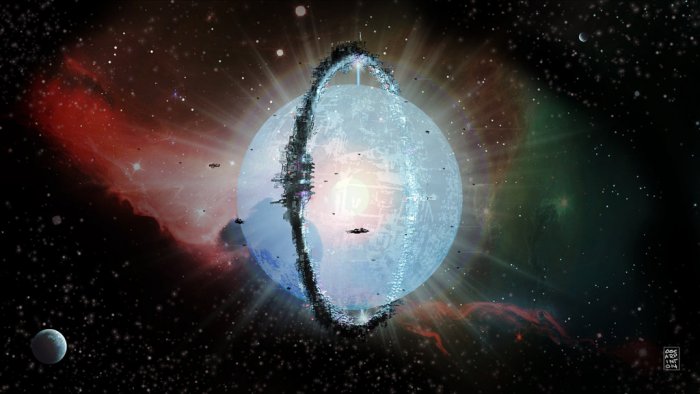
“Through these awards, the program aims to support bold, innovative research with the potential to expand boundaries and catalyze breakthrough discoveries, as well as inspire students to pursue scientific knowledge and become original, forward-looking big question thinkers of tomorrow,” said Donald G. York, the Horace B. Horton Professor in Astronomy and Astrophysics at the University of Chicago, who led the competition.
“Kepler has now discovered over 2,000 new worlds around other stars, most of them smaller than twice the size of Earth, and many probably having water,” Marcy said. “This flood of nearly Earth-size planets offers the first opportunity for us humans to hunt for other intelligent species that may have evolved on them.”
Marcy’s grant – $200,000 for two years – will also pay for time on the enormous Keck telescopes in Hawaii to take spectra of 1,000 planet-hosting stars in search of laser emissions from advanced civilizations.
“Technological civilizations may communicate with their space probes located throughout the galaxy by using laser beams, either in visible light or infrared light,” he said.
”Laser light is detectable from other civilizations because the power is concentrated into a narrow beam and the light is all at one specific color or frequency. The lasers outshine the host star at the color of the laser.”
Bousso, a professor of physics, is known for his proposal with Joseph Polchinski, a UC Berkeley Ph.D. now at UC Santa Barbara, that string theory implies that the universe is comprised of possibly an infinite number of multiverses, each with its own physical characteristics but operating under the same laws of physics.
See also:
- Invisible Aliens: Extraterrestrial Life May Be Beyond Human Understanding
- Super Aliens May Already Live Inside Supermassive Black Holes
- Aliens Living On Desert Worlds
Though we are unlikely to be able to visit them or even see them with the largest telescopes – light hasn’t had time to travel that far since the universe began – he is optimistic that it’s possible to find predictions of the hypothesis that can be tested.
“People were initially skeptical of Einstein’s general theory of relativity, but now, decades later, your GPS runs on it and it has led to incredibly profound questions in physics, such as how the universe began and what happens inside a black hole,” Bousso said.
“We are just at the early stages of this multiverse theory, but it is a very serious, plausible proposition that we have to take seriously and test – and try to shoot down as hard as we can.”
First version of this article was originally published on October 13, 2012
Written by Cynthia McKanzie – MessageToEagle.com Staff Writer
Copyright © MessageToEagle.com All rights reserved. This material may not be published, broadcast, rewritten or redistributed in whole or part without the express written permission of MessageToEagle.com
Related Posts
-
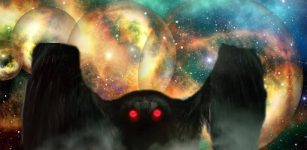 Mothman Mystery – An Unknown Giant Bird, Interdimensional Being Or Something Else?
No Comments | Mar 18, 2019
Mothman Mystery – An Unknown Giant Bird, Interdimensional Being Or Something Else?
No Comments | Mar 18, 2019 -
 HD 189733b: A Blue Marble Planet Where It Rains Super-Hot Glass
No Comments | Jan 6, 2016
HD 189733b: A Blue Marble Planet Where It Rains Super-Hot Glass
No Comments | Jan 6, 2016 -
 The Ancient Tradition And True Meaning Of Candy Canes
No Comments | Dec 24, 2016
The Ancient Tradition And True Meaning Of Candy Canes
No Comments | Dec 24, 2016 -
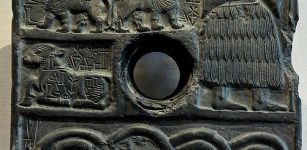 Babylonian Story Of Bird-God Anzu ‘The Wise One’ And His Underworld Realm
No Comments | Dec 10, 2016
Babylonian Story Of Bird-God Anzu ‘The Wise One’ And His Underworld Realm
No Comments | Dec 10, 2016 -
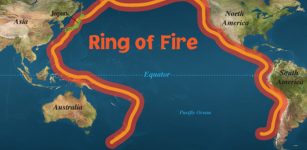 Ring Of Fire: Gigantic Zone Of Frequent Earthquakes And Volcanic Eruptions
No Comments | Apr 16, 2016
Ring Of Fire: Gigantic Zone Of Frequent Earthquakes And Volcanic Eruptions
No Comments | Apr 16, 2016 -
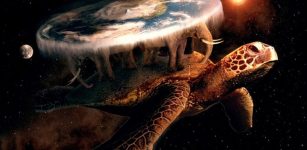 Myths And Legends Reveal Ancient Turtle Worship Linked To The Creation Of The World
No Comments | Aug 29, 2015
Myths And Legends Reveal Ancient Turtle Worship Linked To The Creation Of The World
No Comments | Aug 29, 2015 -
 Terminal Lucidity Phenomenon: Why Are Some People So Vigorous Shortly Before Dying?
No Comments | Mar 15, 2019
Terminal Lucidity Phenomenon: Why Are Some People So Vigorous Shortly Before Dying?
No Comments | Mar 15, 2019 -
 People Can Float In The Dead Sea
No Comments | Jan 25, 2016
People Can Float In The Dead Sea
No Comments | Jan 25, 2016 -
 Researchers Discover Previously Unknown Mineralogy Of The Deep Earth
No Comments | Oct 23, 2022
Researchers Discover Previously Unknown Mineralogy Of The Deep Earth
No Comments | Oct 23, 2022 -
 Beautiful Roman-Era Tomb Moved To A Safe Place At Iznik Turkey
No Comments | Nov 25, 2015
Beautiful Roman-Era Tomb Moved To A Safe Place At Iznik Turkey
No Comments | Nov 25, 2015


